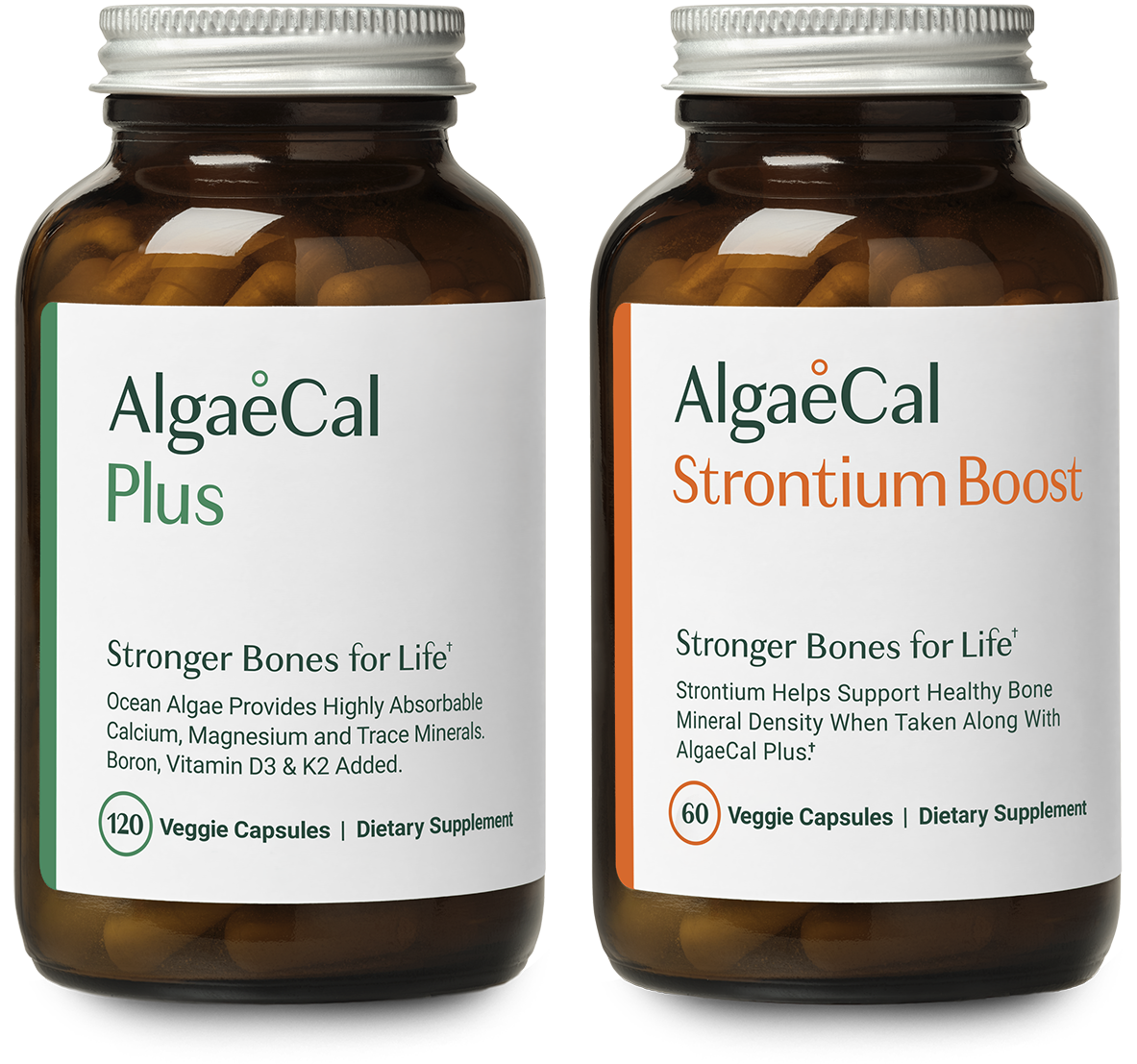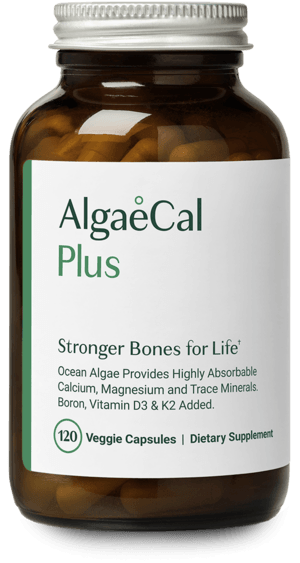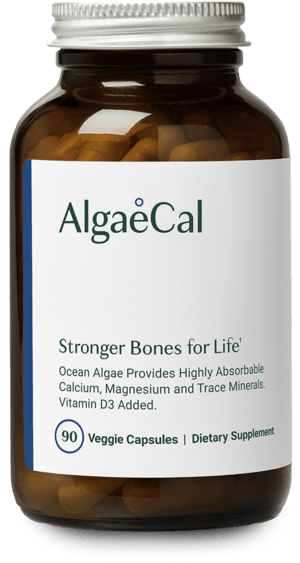Lara Pizzorno is the author of “Your Bones: How You Can Prevent Osteoporosis and Have Strong Bones for Life – Naturally” and a member of the American Medical Writers Association with 29 years of experience specializing in bone health.
Recently we asked Lara if she would help us provide a series of short, ongoing videos to help you (our customers and readers) stay up to date on the latest facts and science related to bone health.
In this latest video, Lara talks about the calcium forms you should completely avoid and why. Watch the video below (or read the transcript provided) and let us know what you think in the comments. 🙂
Hello, I’m Lara Pizzorno the author of “Your Bones” and I’m here today to share information with you that I hope will help you have healthier bones. Today I want to talk to you about some calcium supplements that you may want to avoid. There are several types of calcium supplement that you might see, that won’t serve you well – and this is the topic today.
The first one I’d like to discuss is calcium from bone meal. This fell out of favor back in the 1980s when it was found to be contaminated with lead, arsenic, mercury and cadmium, all of which are poisons that destroy bone. Obviously you don’t want to take calcium from bone meal. You most likely wouldn’t find it being sold because of this, but it’s possible that you would and if you do, be sure to avoid this calcium.
Another type of calcium supplement that won’t serve you as well is calcium lactate and calcium gluconate. These two other forms of supplemental calcium are not unsafe, but they’re not a good choice for you because they deliver far less calcium per tablet or capsule than other forms of calcium.
Calcium lactate contains 13% elemental calcium and calcium gluconate contains only about 9% elemental calcium.
So neither of these are considered practical for supplemental use, so many capsules are needed to be taken every single day for needed doses. One popular brand of calcium lactate contains 255 mg of elemental calcium in 3 tablets so to maintain a daily dose of about 750 mg, which is what you need, you would have had to take 9 capsules daily of calcium.
Compare this to AlgaeCal where you only need 4 capsules daily and AlgaeCal is also supplying you with vitamin D, vitamin K2, vitamin C, magnesium, boron and a very wide range of trace minerals, all of which play a very important role in building bone.
So the next form of calcium that I would like to discuss that I do not recommend is hydroxyapatite. You’ll see a lot of promotion of this type of calcium as being the very best supplemental form even though it’s quite a bit more expensive than other forms of calcium. It’s marketed as being superior. So what is it?
Hydroxyapatite is a mineral complex that’s derived from cow bones in which calcium is joined with phosphorus or calcium phosphate, which is the principal form of storage for calcium in bone. It sounds like it might be helpful, but when we consume calcium, no matter what it’s bound up with, ok whether it’s phosphate or citrate or any other compound, it is going to be freed from our digestive tract from that compound before the calcium is absorbed. In other words in the case of hydroxyapatite, the calcium is going to be separated from the phosphorous and we’ll be absorbing more phosphorous and we really do not need any supplemental phosphorus.
I just recently wrote a review article for Integrative Medicine Clinicians Journal on this issue. Recent research has shown that in the US, Canada and the UK, the population is getting way too much phosphorous for our own good. We’re getting so much phosphorus from phosphate additives in processed foods such as meat products and sodas it’s increasing our risk of heart attacks, kidney disease and osteoporosis and death from virtually all causes as the latest research of what I just wrote about shows.
Furthermore hydroxyapatite is expensive. As I mentioned, it’s the most expensive form of calcium, only a few studies have been done to on whether it’s worth this added cost and none of them have been done in the US or Canada and none have been done recently. Two studies have been done in Europe, the results of these were published in 1984 and 1985 and these studies showed that hydroxyapatite was helpful in lessening bone loss when it was taken along with corticosteroid drugs which do cause bone loss. But hydroxyapatite was not compared to any other forms of calcium in these studies. So they did not show that it was more helpful than any other form of calcium in preventing bone loss associated with corticosteroid drugs. In the studies that have done comparisons, which were published as a meta-analysis of 12 very very small trials hydroxyapatite was shown to slow bone loss comparably to calcium carbonate, so why spend the extra money on it?
I no longer recommend hydroxyapatite for 3 reasons.
- First of all it supplies potentially harmful phosphorus for which you do not want to increase your intake.
- Secondly, it has not been shown to be more effective than other forms of supplemental calcium and…
- Thirdly, it is so much more expensive. You’d be much better off purchasing and using AlgaeCal.
I hope this information has helped you and I hope you tune in next time for the next video, which we will be discussing what you need to know so you are best able to absorb the calcium you do choose to take. Thanks and have a good day.
Sources:
Pizzorno L. Canaries in the phosphate-toxicity coal mines. Integrative Medicine, Vol. 13, No. 6, December 2014.
Straub DA. Calcium supplementation in clinical practice: a review of forms, doses, and indications. Nutr Clin Pract. 2007 Jun;22(3):286-96. PMID: 17507729
Pines, A., H. Raafat, A. H. Lynn and J.WhittingtonJ. 1984. Clinical trial of microcrystalline hydroxyapatite compound (‘Ossopan’) in the prevention of osteoporosis due to corticosteroid therapy. Curr Med Res Opin 8(10):734–42. PMID: 6373153.
Castelo-Branco, C., M. Ciria-Recasens, M. J.Cancelo-Hidalgo, et al. 2009. Efficacy of ossein-hydroxyapatite complex compared with calcium carbonate to prevent bone loss: a meta-analysis. Menopause Sep-Oct;16(5):984–91. PMID:19407667.





Article Comments